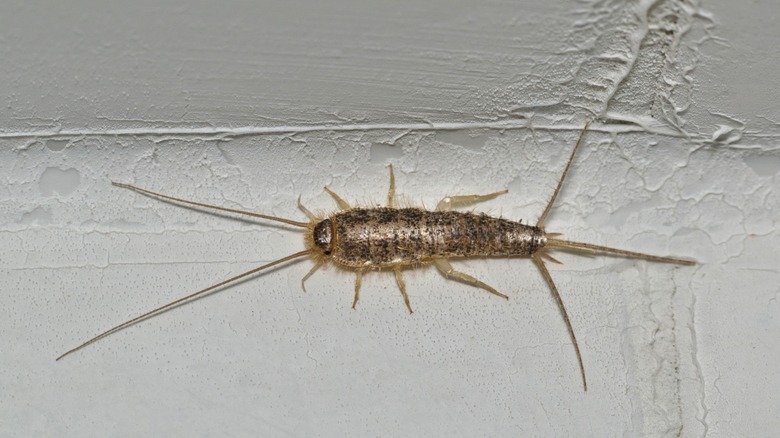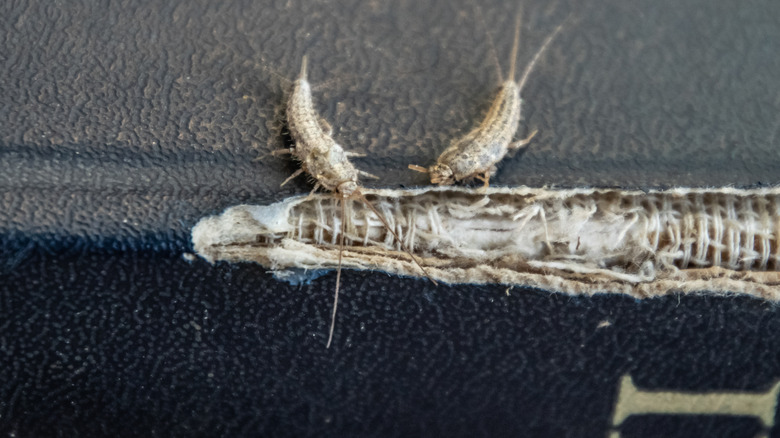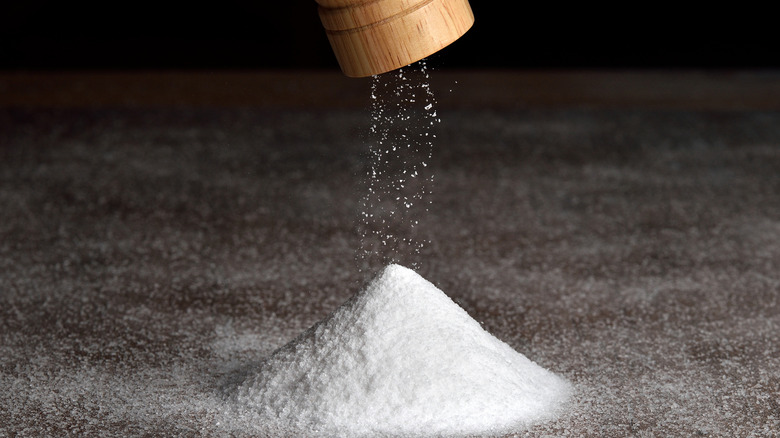Solve Your Silverfish Problem With A Common Household Essential
Fond of damp, humid environments, silverfish are tiny, wingless bugs most at home in your bathrooms, attics, garages, and basements. While not necessarily indicative of unhygienic practices, their presence often signals water leakage, unless you live in a humid climate. Being shy, nocturnal creatures, they are brilliant at concealing their presence until their penchant for starch and cellulose kicks in. While controlling humidity helps keep these insects at bay, dealing with a full-on invasion requires stronger methods. But rather than reaching for the pesticide, you can instead grab some salt.
Despite being non-toxic to humans and pets, silverfish are the kind of bugs you don't want in your home, given their ability to wreak havoc. As they are attracted to fiber and sugar-rich foods, they quickly contaminate unsealed packets of pasta, rice, flour, and carb-rich items. They are also notorious for destroying books, cardboard boxes, wallpaper, carpets, and more. So, it's essential to get rid of these pesky bugs promptly. But first, you must know how to identify them.
Spotting signs of a silverfish infestation
The easiest way to detect silverfish's presence is to find silver or gray wingless insects glistening with fish-like scales burrowed in your home's dark and damp spots, like wall crevices. Ranging between 0.5 and 1 inch in length at maturity, these tiny bugs have tapered tails enclosed by bristles, which explains their alternate name, 'bristletails.' However, considering their stealth and aversion to light, coming across live silverfish is a rarity. Other tell-tale signs include peppercorn-shaped black droppings behind furniture or underneath cupboards, which sometimes may give off the semblance of small dust particles. You may also find yellow stains on your prized books and clothing.
Moreover, as these pesky invaders shed their skins periodically, you may come across possessions covered in almost transparent, tiny, cast-off shells. If you find any scrape marks on your magazines, artwork, or plaster, or small holes in adhesive or food items, know it's time to eliminate silverfish. Finally, coming across off-white, oval eggs in moist areas can signal a pest invasion.
Using salt to eliminate silverfish
The most natural way to drive silverfish out of your home is to use salt, which these pesky bugs find hard to resist. Salt is known as a desiccant, which means it acts as a drying agent. So, the moment bristletails consume salt, all their bodies' water content is absorbed, leaving them dry and dehydrated and leading to their eventual death. Moreover, salt's drying property also comes in handy to dehumidify damp environments existing in bathrooms or under kitchen sinks, which are the primary breeding grounds of silverfish.
To use salt as a silverfish repellent, spread a thin layer all over the areas commonly visited by these primitive creatures, including infected cracks and crevices. For instance, you can sprinkle salt in cupboards, drawers, or under furniture. Applying a dash of salt directly to live bristletails is also an option.
While salt is an inexpensive and eco-friendly way to eliminate silverfish, it takes more time to show its impact and may damage wood and carpets when used excessively. Moreover, it cannot remove eggs and larvae, requiring other control methods like insecticides.


